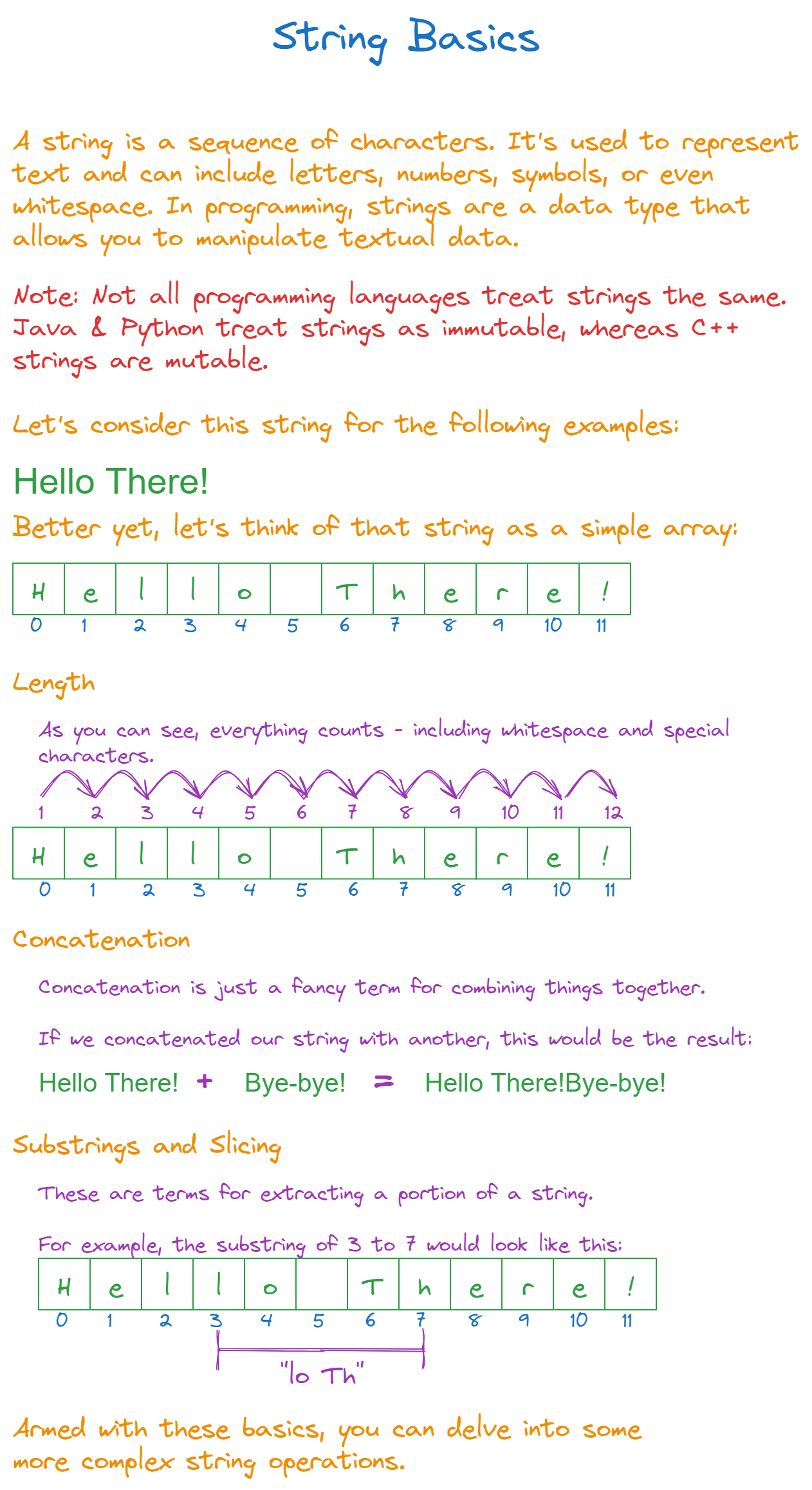String Basics

What is a String?
A string is a sequence of characters. It's used to represent text and can include letters, numbers, symbols, or even whitespace. In programming, strings are a data type that allows you to manipulate textual data.
- Immutable Strings: In languages like Java and Python, strings are immutable, meaning once created, they cannot be changed.
- Mutable Strings: In other languages, like C++, you can modify strings directly.
Let's explore some basic string operations.
Declaring and Initializing Strings
1let str = "Hello World!";Length of a String
Finding the length of a string is a fundamental operation. Here's how you can find the length in different languages:
1let length = str.length;Concatenating Strings
Combining two or more strings is known as concatenation. Here's how you can concatenate strings:
1let concatenated = str + " Concatenated!";Substrings and Slicing
Extracting a portion of a string is known as slicing or finding a substring. This is how you can do it:
1let sliced = str.slice(0, 5); // "Hello"Understanding these basic operations lays the foundation for more complex string manipulation tasks. From here, you can move on to more advanced techniques such as pattern matching, regular expressions, and text parsing.
String manipulation is not just about the mechanics of dealing with text; it's about thinking algorithmically and applying logical thought processes. These basic operations will become the building blocks for solving more complex problems in your coding interviews.


